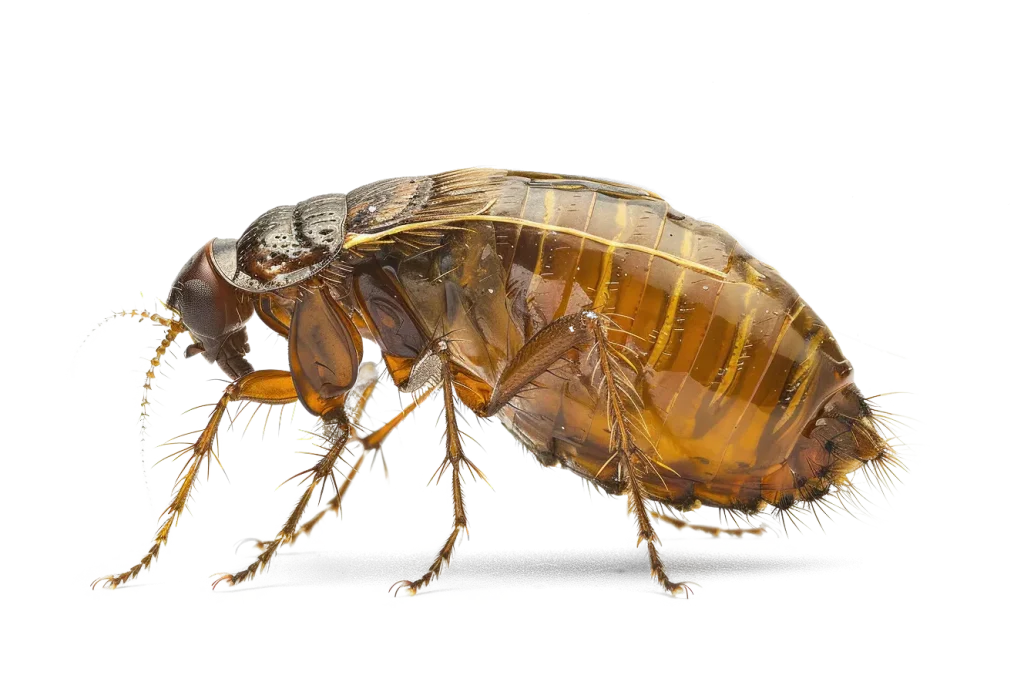
BED BUG
Common name: Bed Bugs
Size: 4 to 7 mm in length
Life Span: 4 - 6 months
Bedbugs are small, flat, reddish-brown insects that feed exclusively on blood, preferring human hosts. They are primarily nocturnal, hiding in cracks and crevices during the day and emerging at night to feed. Common hiding spots include mattresses, bed frames, headboards, couches, and behind wallpaper. They are expert hitchhikers, often spreading through luggage, clothing, and used furniture. Unlike other pests, bedbugs are not attracted to dirt or decaying material but are drawn to warmth and carbon dioxide. Their bites are painless at first but can lead to itching, redness, and allergic reactions in some people. While they do not transmit diseases, their presence causes stress, sleep disturbances, and significant discomfort.
A single female can lay hundreds of eggs in her lifetime, making infestations difficult to control. Bedbugs can survive for months without feeding, allowing them to remain dormant until a host is available. Their resilience and ability to hide in small spaces make them one of the hardest household pests to eliminate. Detection often requires careful inspection, as they leave behind dark faecal spots, shed skins, and small blood stains on bedding.
As pest
Bedbugs are notorious for their ability to infest homes, hotels, dormitories, and public transportation. Their bites often appear in clusters or lines, causing itching and skin irritation. While some individuals may not react to bites, others develop severe allergic reactions that require medical attention. Unlike mosquitoes or ticks, bedbugs do not transmit diseases, but their presence can lead to psychological distress, anxiety, and insomnia. Infestations spread quickly, as bedbugs move through walls, electrical outlets, and furniture. Because of their small size and preference for dark, hidden spaces, they are difficult to detect until the problem becomes severe. People often discover them after noticing bites or finding tiny insects near their sleeping areas.
Over-the-counter insecticides may kill some bedbugs on contact but are often ineffective against hidden populations. Professional treatments, including heat and chemical applications, are usually required for complete eradication. Travel increases the risk of bringing bedbugs home, making vigilance essential when staying in hotels or using shared transportation. Once established, they are one of the most challenging pests to remove, requiring a combination of thorough cleaning, heat treatments, and repeated inspections.

How to control
Managing bedbugs requires a combination of inspection, treatment, and prevention. Regularly checking mattresses, headboards, and furniture for signs of infestation helps with early detection. Washing bedding and clothing in hot water and drying them at high temperatures kills bedbugs and their eggs. Vacuuming infested areas, including carpets, cracks, and upholstery, removes some of the population but does not eliminate them. Sealing gaps in walls, baseboards, and furniture reduces their hiding spots. Heat treatments, where temperatures above 50°C are applied to infested areas, are one of the most effective methods for eliminating bedbugs.
Insecticides can provide relief, but many bedbug populations have developed resistance to common chemicals, making professional pest control necessary for severe infestations. To prevent future problems, travellers should inspect hotel rooms, avoid placing luggage on beds, and use protective covers on mattresses. Secondhand furniture should be examined carefully before bringing it indoors. Since bedbugs are highly resilient, eliminating them often requires multiple treatments and ongoing monitoring. Early action is key, as small infestations are much easier to control than widespread outbreaks.

